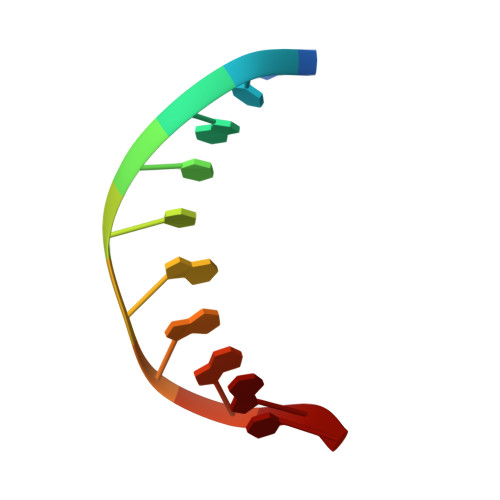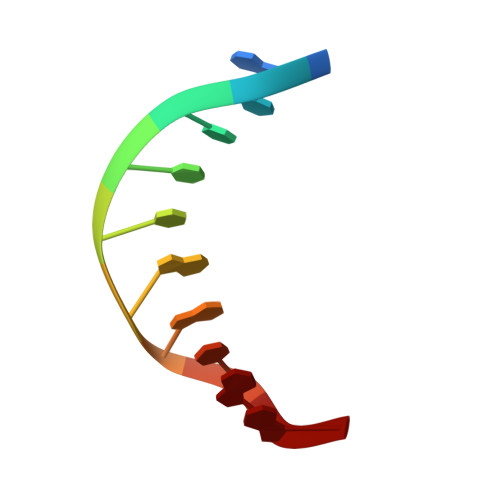Solution structure of a DNA duplex with a chiral alkyl phosphonate moiety.
Soliva, R., Monaco, V., Gomez-Pinto, I., Meeuwenoord, N.J., Marel, G.A., Boom, J.H., Gonzalez, C., Orozco, M.(2001) Nucleic Acids Res 29: 2973-2985
- PubMed: 11452022
- DOI: https://doi.org/10.1093/nar/29.14.2973
- Primary Citation of Related Structures:
1IEK, 1IEY - PubMed Abstract:
The solution structures of two DNA decamers of sequence d(CCACCpxGGAAC).(GTTCCGGTGG) with a chiral alkyl phosphonate moiety (px) have been determined using NMR and restrained molecular dynamics simulations and compared with the solution structure of the unmodified duplex. The (1)H NMR spectra of two samples with pure stereochemistry in the modified phosphate have been assigned. The structures of both diastereoisomers, as well as the unmodified control duplex, have been determined from NMR-derived distance and torsion angle constraints. Accurate distance constraints were obtained from a complete relaxation matrix analysis of the NOE intensities. The structures have been refined with state of the art molecular dynamics methods, including explicit solvent and applying the particle mesh Ewald method to properly evaluate the long-range electrostatic interactions. In both cases, the calculations converge to well-defined structures, with RMSDs of approximately 1 A. The resulting structures belong to the general B family of DNA structures, even though the presence of the alkyl phosphonate moiety induces some slight displacement to the A-form in the neighborhood of the modified phosphate. Partial neutralization of this phosphate and the steric effect of the alkyl moiety provoke moderate bending in the DNA. This effect is more pronounced in the S diastereoisomer, where the alkyl group points inwards to the double helix.
- Departament de Bioquímica, Universitat de Barcelona, C/. Martí i Franquès 1-11, 08028 Barcelona, Spain.
Organizational Affiliation:


















